The Best Secret Weapon Against Landmines and Tuberculosis Is a Rat
African giant pouched rats are better mine-sniffers than dogs and faster at TB diagnosis than human doctors.
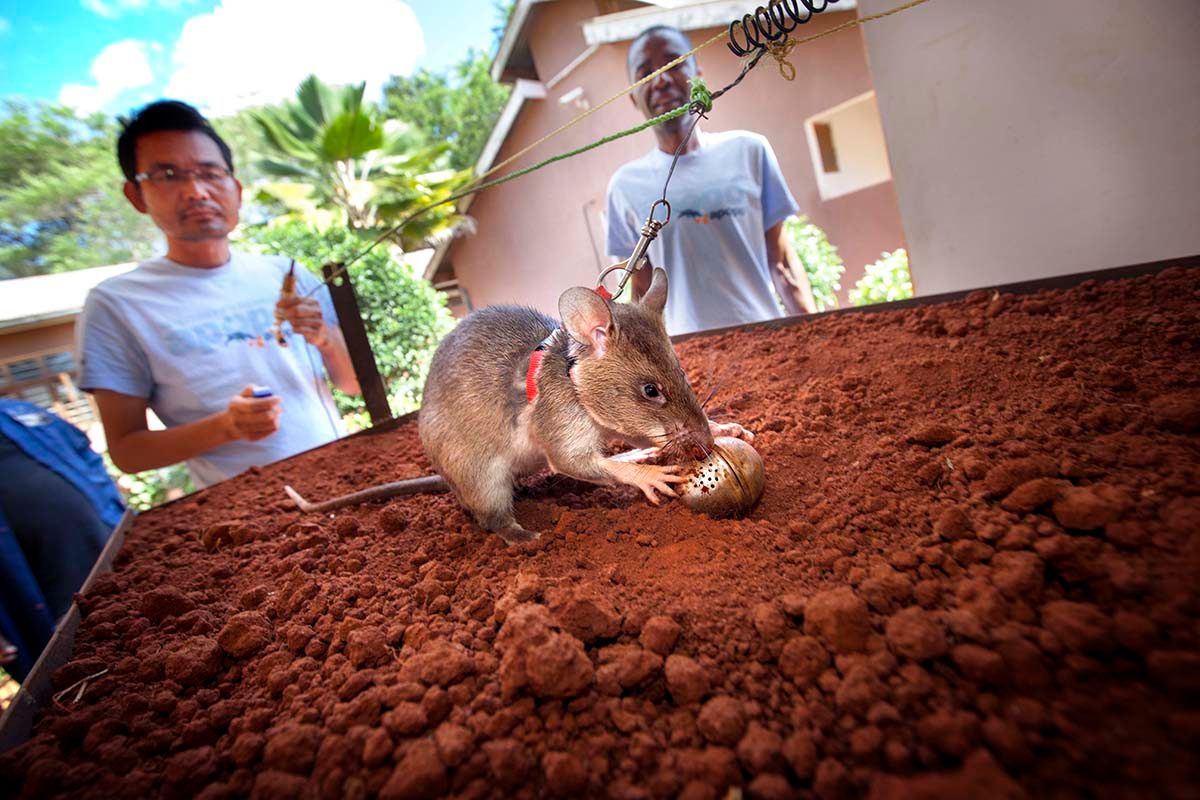
Africa is struggling with a tuberculosis crisis; 450,000 people on the continent died of TB last year. And several African countries (and others outside Africa) that have weathered civil wars also face threat from unexploded landmines. Each of these problems alone is difficult. But what if there were a solution to both—something that could detect not only unexploded landmines but also new tuberculosis cases, and help stop both before they cause further damage?
Well, this magic device exists. And it’s a rat.
The amazing HeroRATs, a corps of specially trained mine- and TB-sniffing rats, were created by a Dutch NGO called the Anti-Personnel Landmines Removal Product, or APOPO. It was founded in 1997 by Bart Weetjens, a Belgian product designer, who was searching for a more affordable way to help Africans clear landmines. He knew that rats—specifically, African giant pouched rats—are intelligent, social creatures with a keen sense of smell, and reasoned that they could be trained to detect buried landmines, small arms, and leftover unexploded ordnance.
The first HeroRats went to work in Mozambique in 2003 as trials, and passed testing in 2005. By 2006 APOPO had a brigade of HeroRATs. Today, there are 111 HeroRATs deployed in Tanzania, with a further 23 in Angola and 16 in Mozambique.
Common in sub-Saharan Africa, African giant pouched rats are one of the world’s largest rodents: they measure almost three feet in length and weigh about four pounds. They live up to eight years and are resistant to tropical diseases. And as Weetjens intuited, they’re smart and trainable enough to be an amazing resource. Rats face plenty of human prejudice—they’re seen as disease-carrying vermin in the West and crop-destroying varmints in Africa—but APOPO’s trained rats are truly heroic.
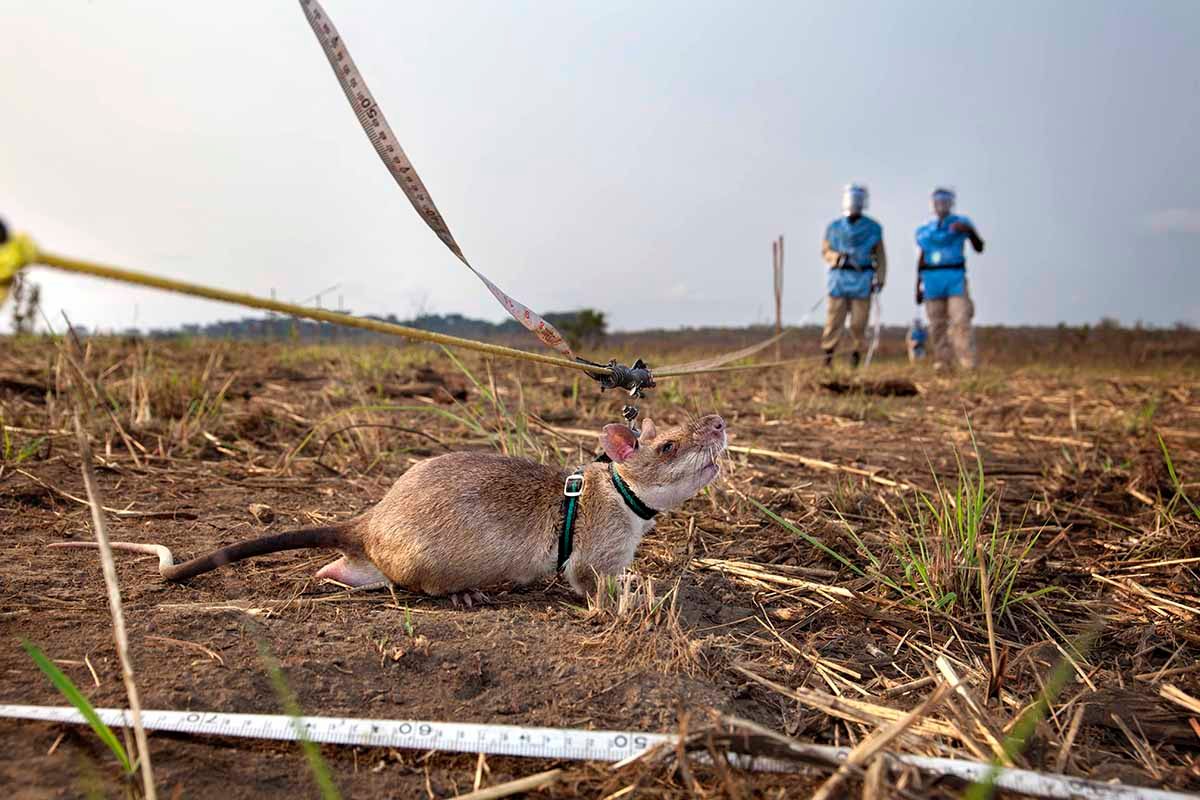
Thanks to HeroRAT teams, 270 square miles of Mozambique farmland are once again available to farmers dislocated since the 1980s. HeroRATS exposed 13,826 mines, 29,031 small arms and ammunitions, and 39,601 leftover unexploded munitions. Removing landmines not only saves lives but also and restores land for farming, development, and safe travel, including delivery of emergency aid.
The rats are many times more efficient at this job than humans. In 30 minutes a rat can do what it takes a human a day to do—if a human could do it at all. Metal detectors not only fail to discern between metal rubbish and active ordinance, but also have difficulty finding landmines now made predominantly out of plastic.
HeroRATs are also a better demining solution than dogs, who have long been the go-to animal for mine detection. Rats have a working life span equivalent to that of dogs, and work similar hours—from about 5 a.m. to 9 a.m., before it gets too hot—and in almost every other way the rats are superior.

For one, it costs much less to train, feed and house a rat, as well as send it into foreign countries. It costs about $40,000 to train a dog to locate landmines, but only about $4,000 to train a HeroRAT. Dogs bond with their trainers, who have to accompany them on their missions. Rats do not, so trainers do not have to accompany HeroRATS into the field.
Both human and dogs are at risk of being killed while working, but HeroRATs are not because they don’t weigh enough to trip the mines—no HeroRATs have been killed sniffing for mines so far, whereas human demining workers are killed at a rate of about one for every 5,000 mines removed. HeroRATs have removed mines in Mozambique, Angola, and Cambodia.
And these heroic rats don’t stop there. They’re also more efficient than humans in examining samples of human sputum (coughed-up phlegm) for evidence of TB. A human technician can examine 25 sputum samples in a day; a HeroRAT can examine 100 sputum samples in 20 minutes. Tuberculosis is a serious problem in African countries—about 1,500 Africans die of TB every day—and in Mozambique, Tanzania’s neighbor, it was declared a national emergency.
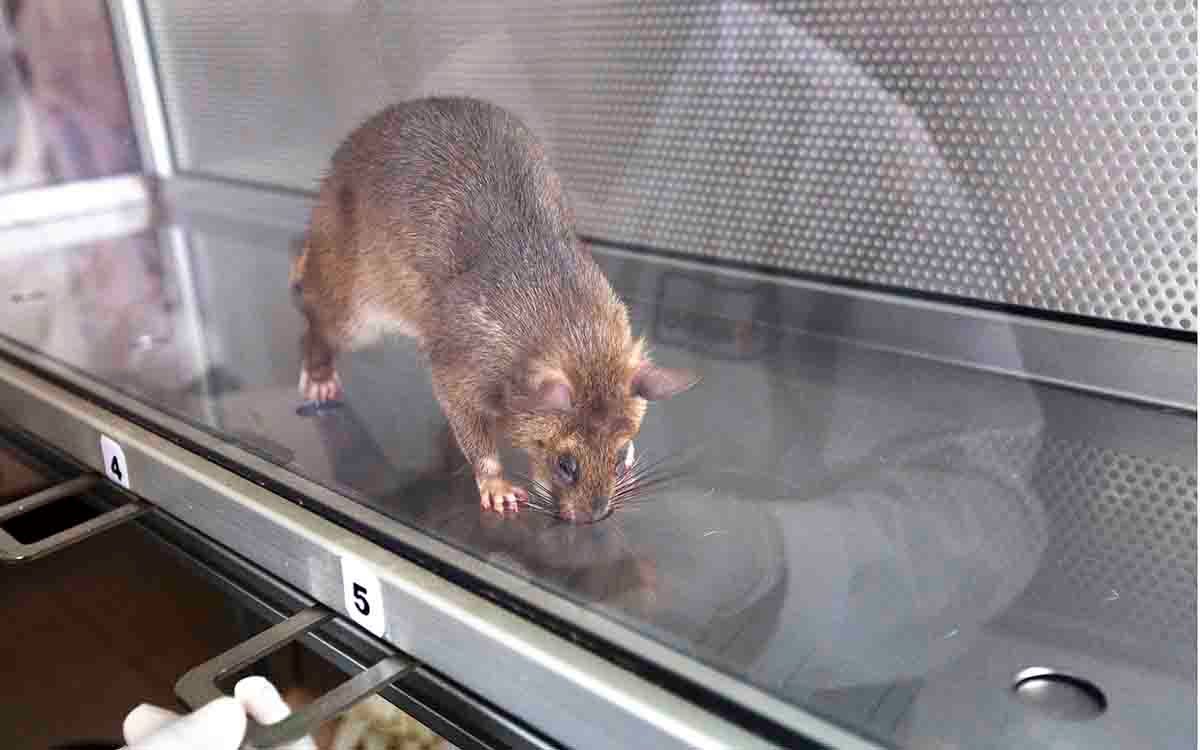
The TB-detecting HeroRATs have increased TB detection rates in Tanzania and Mozambique by 45 percent—which means dramatically fewer new cases of TB, as one untreated TB patient can infect a dozen people in a year, says Weetjens. APOPO has 50 trained TB-detecting HeroRats and a dedicated TB detection facility in Mozambique, where patients can get test results in 24 hours.
Training a HeroRat takes nine months. At four weeks, baby rats are taken from their mothers to socialize with human beings and to begin their training, associating the scent of TNT or TB with a food reward. When they hover over the appropriate scent, their trainer presses a clicker and gives the baby rat a treat of ground banana and food pellets. HeroRATS love banana.

After the rats learn to associate the scent of TNT with an edible reward, the next step in training shifts to targets buried in a big dirt-filled box, which also includes non-target items like empty cans. The HeroRATs learn to scratch over the scent of TNT under the dirt. For TB-diagnosing HeroRATs, the next step is a long box with a perforated metal floor and glass wall. Under each of the 10 perforations, there is a TB sputum sample. The HeroRats learn to pause for five seconds over a positive TB samples for a food reward.
Training for landmine removal requires a complicated series of steps. Demining HeroRATS advance from a big box of dirt to a practice outdoor field with deactivated landmines and decoys partially uncovered. After they successfully identify these, they move to another training field with slightly buried targets and decoys. Then on to another field with targets and decoys buried even deeper in the ground and another field where they are buried yet deeper again. After all this training, the demining HeroRATS must meet the extremely difficult International Mine Action Standards—600 square meters in 2 days with 100 percent accuracy.
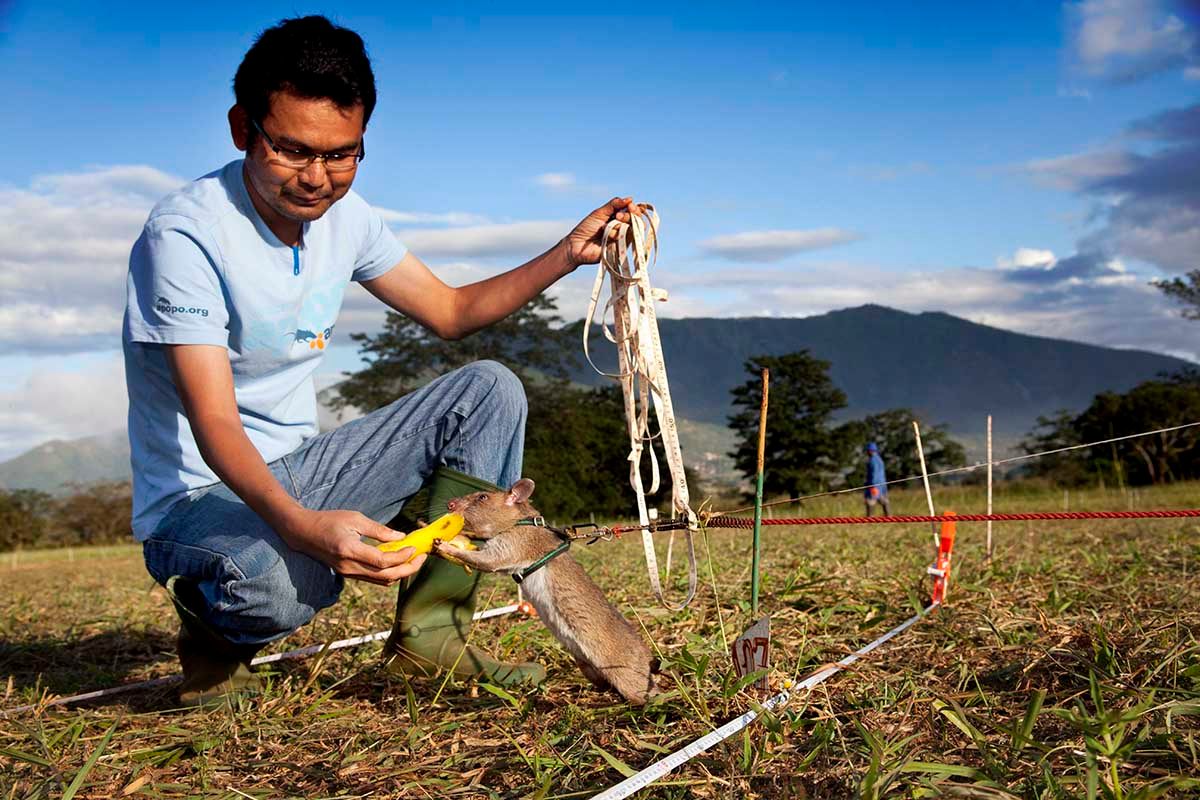
HeroRATS are true heroes for saving land and lives, but they’re not resting on their laurels. Because of their acute sense of smell, Weetjens foresees their use in customs to sniff out contraband. The U.S. is currently testing HeroRATS as a solution for illegal wildlife trafficking. In medicine, they could be used to detect common cancers and degenerative neurological diseases like Alzheimer’s and Parkinson’s. In disasters, HeroRATs could be used to find victims buried under rubble.
And one of those life-saving rats could be yours. At APOPO’s site, you can adopt a HeroRAT, name it, and follow your rat’s progress—or just send these hard-working heroes a banana.
Correction: We have changed or updated several details of this story based on information from APOPO’s communications manager. We had said that Tanzania has unexploded landmines; this is incorrect. We have also corrected inaccuracies in the timeline of APOPO’s research and some details about its work.
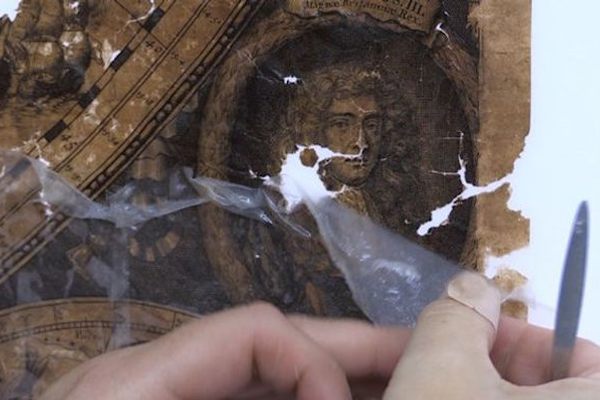
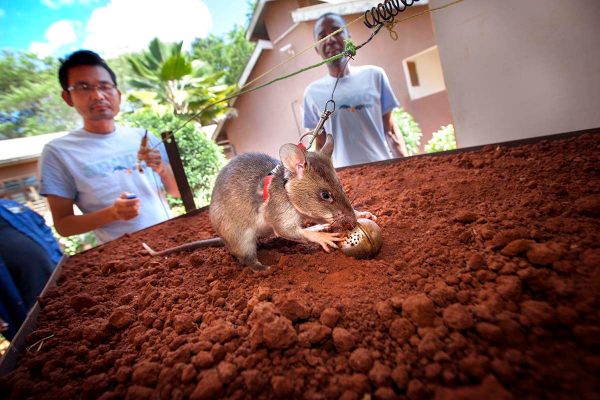





Follow us on Twitter to get the latest on the world's hidden wonders.
Like us on Facebook to get the latest on the world's hidden wonders.
Follow us on Twitter Like us on Facebook